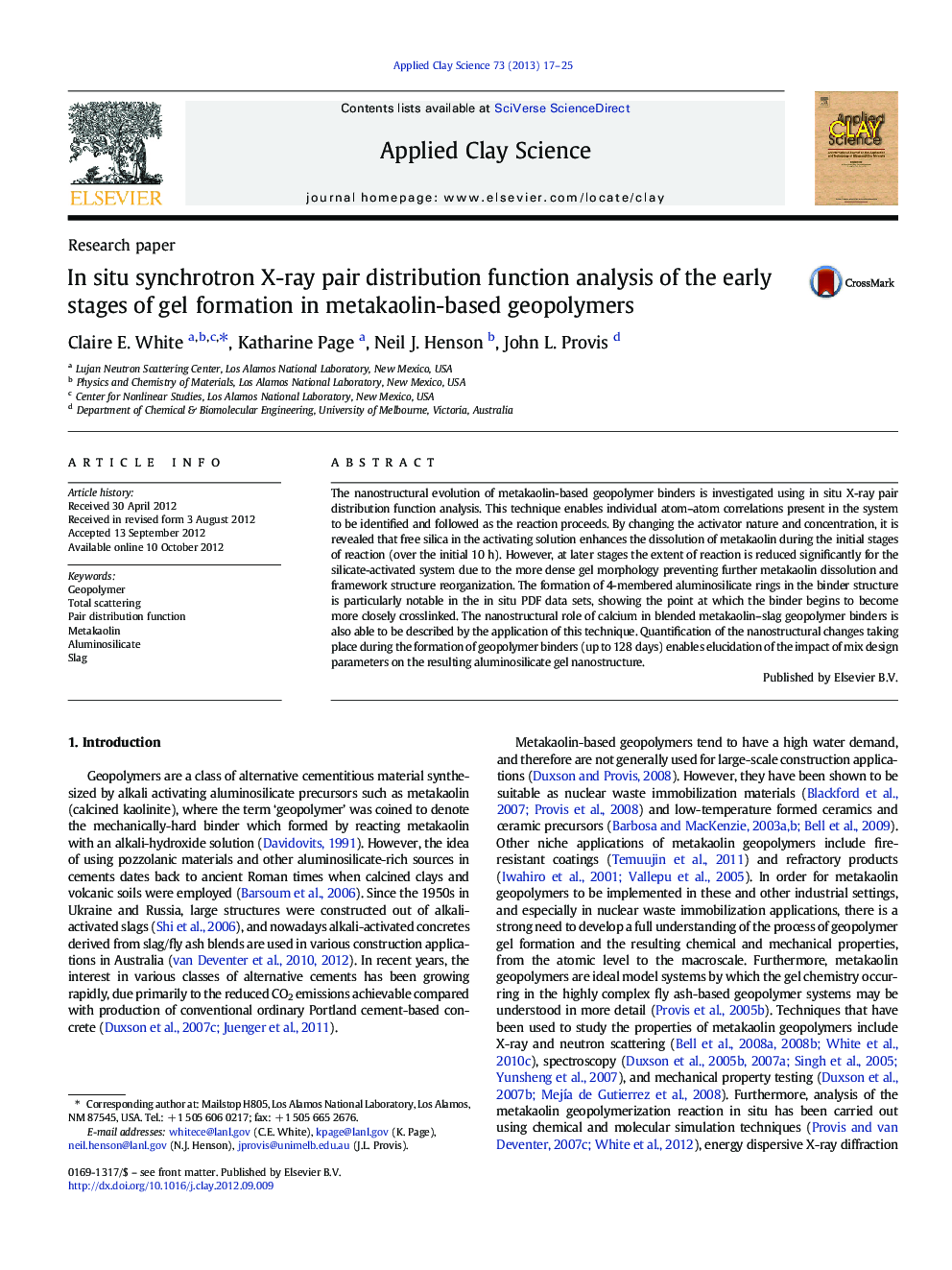| Article ID | Journal | Published Year | Pages | File Type |
|---|---|---|---|---|
| 1695124 | Applied Clay Science | 2013 | 9 Pages |
The nanostructural evolution of metakaolin-based geopolymer binders is investigated using in situ X-ray pair distribution function analysis. This technique enables individual atom–atom correlations present in the system to be identified and followed as the reaction proceeds. By changing the activator nature and concentration, it is revealed that free silica in the activating solution enhances the dissolution of metakaolin during the initial stages of reaction (over the initial 10 h). However, at later stages the extent of reaction is reduced significantly for the silicate-activated system due to the more dense gel morphology preventing further metakaolin dissolution and framework structure reorganization. The formation of 4-membered aluminosilicate rings in the binder structure is particularly notable in the in situ PDF data sets, showing the point at which the binder begins to become more closely crosslinked. The nanostructural role of calcium in blended metakaolin–slag geopolymer binders is also able to be described by the application of this technique. Quantification of the nanostructural changes taking place during the formation of geopolymer binders (up to 128 days) enables elucidation of the impact of mix design parameters on the resulting aluminosilicate gel nanostructure.
► Atomic evolution of metakaolin geopolymers measured using in situ X-ray PDF analysis. ► Formation of four-membered aluminosilicate rings in geopolymer binder evident in data. ► Free silica in activator enhances the initial stages of reaction. ► Free silica in activator retards structure reorganization at later stages of reaction.
